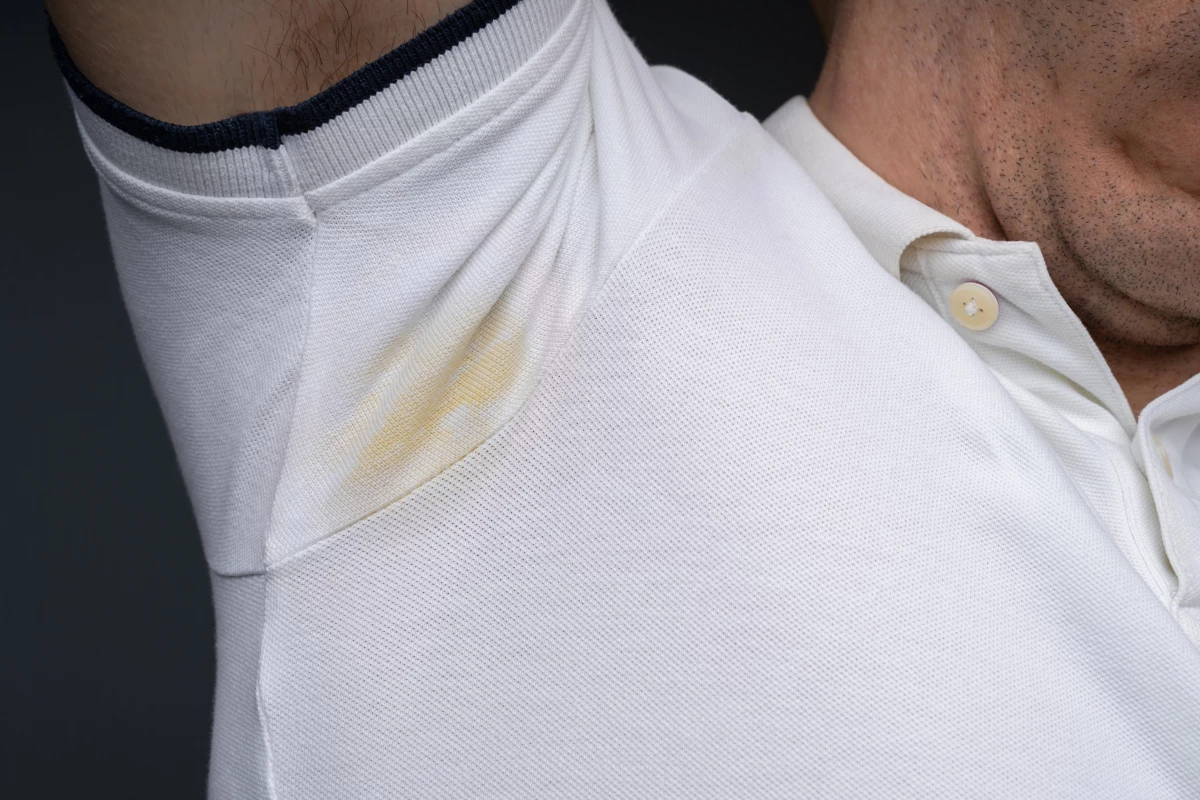Science
Scientists Develop Blue Light Technology to Eliminate Stains

Researchers from Japan’s Asahi Kasei Corporation have made significant progress in tackling the common issue of yellow underarm stains on white clothing. Their innovative approach involves using high-intensity blue LED light to effectively remove these unsightly marks without damaging the fabric, offering a potential solution for consumers and the garment industry alike.
Yellow stains typically arise from a combination of oleic acid and squalene, both of which are present in sweat and skin oils. Other contributors include natural pigments such as lycopene and beta-carotene, often transferred to clothing through spills from beverages like tomato juice and orange juice. Conventional methods for stain removal, including bleach and ultraviolet light, can be harsh on delicate fabrics, prompting researchers to seek alternative solutions.
In a recent study, scientists Tomohiro Sugahara and Hisanari Yoneda revisited their previous research that demonstrated the effectiveness of blue light in reducing yellow discoloration from aged resin polymers. They exposed samples of beta-carotene, lycopene, and squalene to blue light for three hours, resulting in a noticeable loss of color. This photobleaching effect occurs when oxygen in the environment interacts with the chemical compounds, breaking their bonds and transforming them into colorless substances.
To further investigate, the researchers applied squalene to white cotton swatches, simulating aging through a heating process. They then treated the stained fabric with blue LED light for ten minutes, alongside comparison methods involving UV light and hydrogen peroxide soaking. The results indicated that blue light was the most effective method for removing yellow stains without causing damage to the cotton swatches. Additional tests confirmed that this technique also worked on polyester and silk fabrics.
The implications of this study extend beyond home laundry practices, as the researchers are currently exploring the potential for developing both home-use and industrial stain removal systems. According to Sugahara, “Our method utilizes visible blue light in combination with ambient oxygen, which acts as the oxidizing agent to drive the photobleaching process.” This technique not only enhances stain removal but also offers a more sustainable alternative to traditional chemical oxidants.
The findings of this research were published in ACS Sustainable Chemistry & Engineering, highlighting the promise of blue LED technology in addressing everyday fabric care challenges. Furthermore, the applications of high-intensity blue light may extend beyond stain removal, with ongoing studies investigating its antibacterial properties.
As consumers increasingly seek effective and sustainable solutions for garment care, this breakthrough in stain removal technology could revolutionize the way we approach laundry, making it easier to maintain the appearance of our favorite white shirts.
-

 Lifestyle3 months ago
Lifestyle3 months agoLibraries Challenge Rising E-Book Costs Amid Growing Demand
-

 Sports3 months ago
Sports3 months agoTyreek Hill Responds to Tua Tagovailoa’s Comments on Team Dynamics
-

 Sports3 months ago
Sports3 months agoLiverpool Secures Agreement to Sign Young Striker Will Wright
-

 Lifestyle3 months ago
Lifestyle3 months agoSave Your Split Tomatoes: Expert Tips for Gardeners
-

 Lifestyle3 months ago
Lifestyle3 months agoPrincess Beatrice’s Daughter Athena Joins Siblings at London Parade
-

 World3 months ago
World3 months agoWinter Storms Lash New South Wales with Snow, Flood Risks
-

 Science3 months ago
Science3 months agoTrump Administration Moves to Repeal Key Climate Regulation
-

 Science2 months ago
Science2 months agoSan Francisco Hosts Unique Contest to Identify “Performative Males”
-

 Business3 months ago
Business3 months agoSoFi Technologies Shares Slip 2% Following Insider Stock Sale
-

 Science3 months ago
Science3 months agoNew Tool Reveals Link Between Horse Coat Condition and Parasites
-

 Sports3 months ago
Sports3 months agoElon Musk Sculpture Travels From Utah to Yosemite National Park
-

 Science3 months ago
Science3 months agoNew Study Confirms Humans Transported Stonehenge Bluestones









